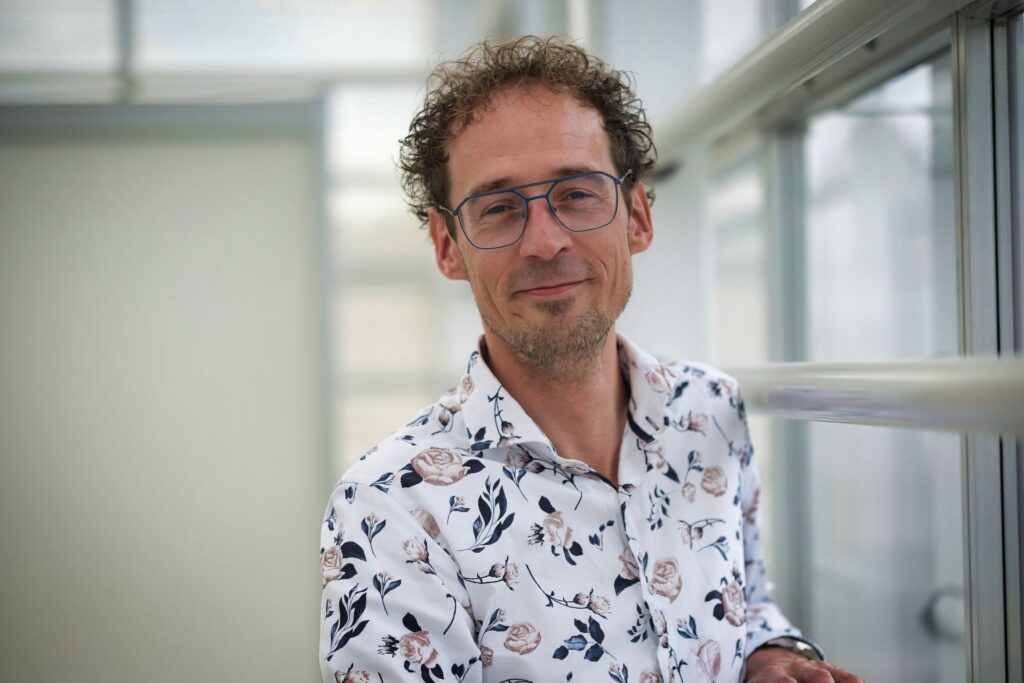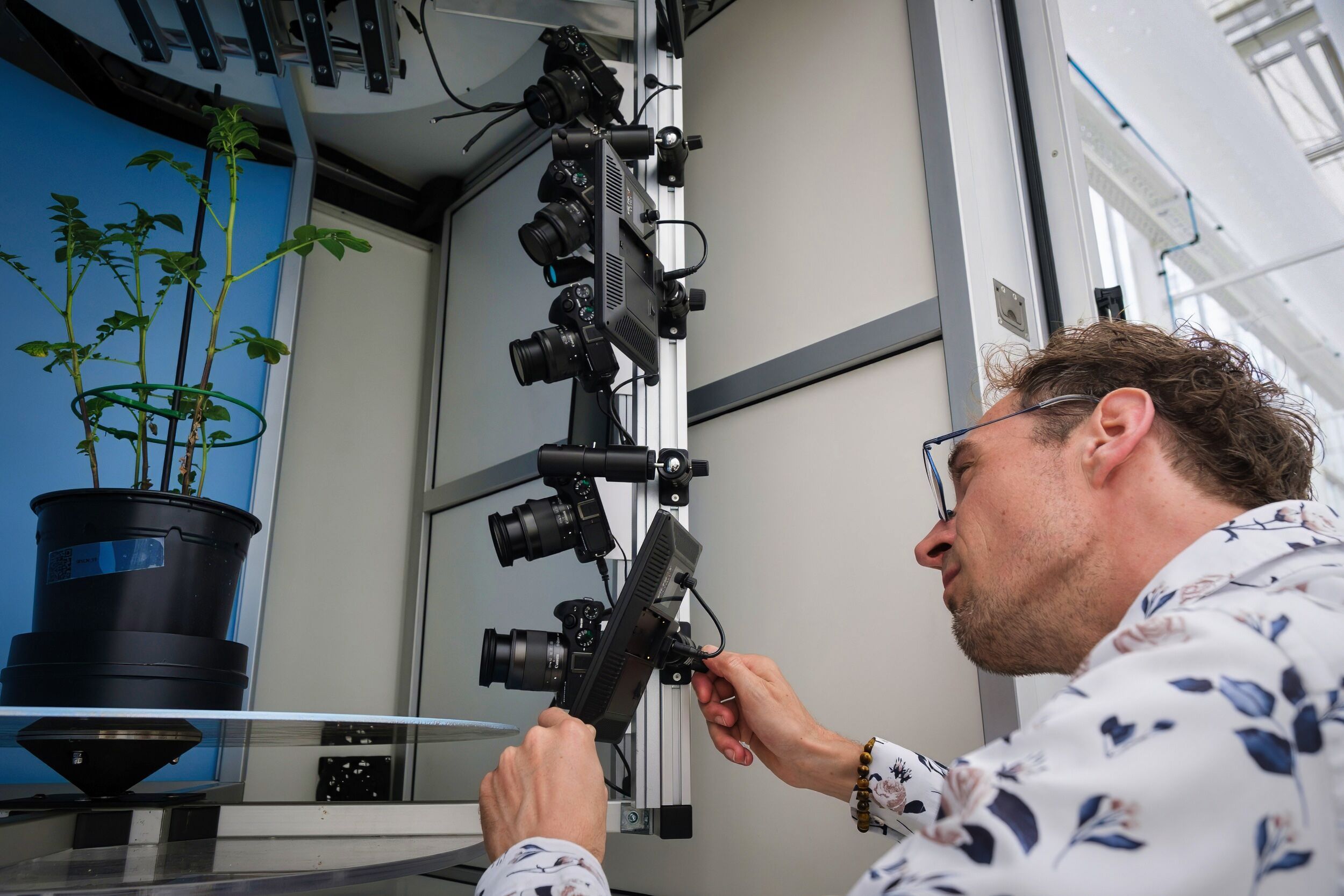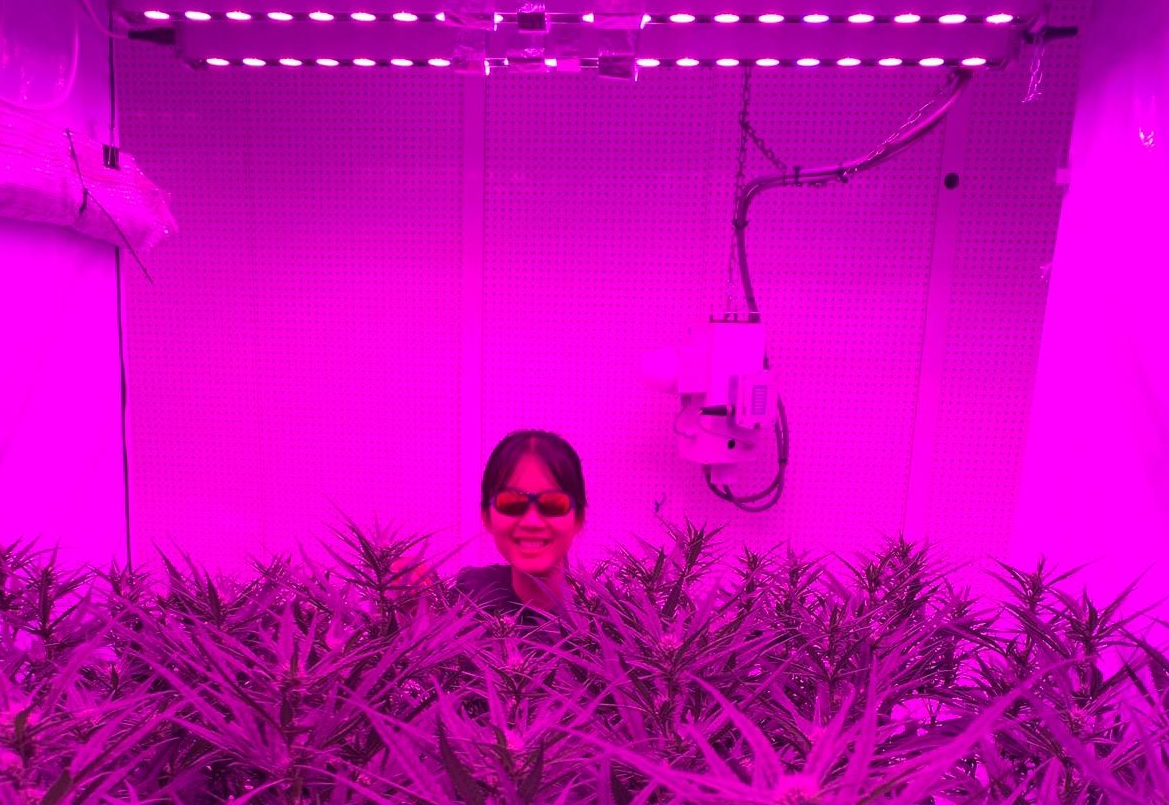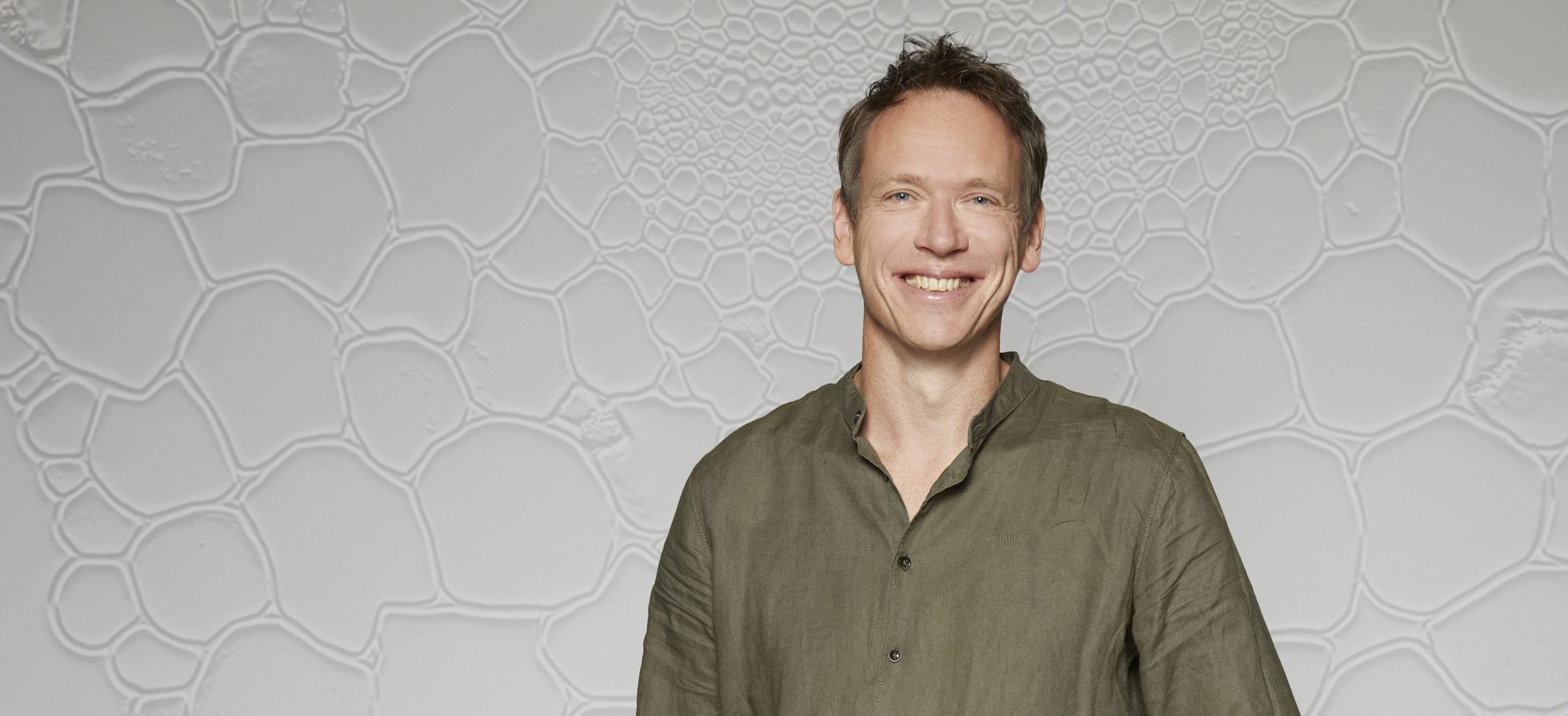BABETTE stands for Bucher And Brouwer’s Environment for Time Traversing Experiment. Its developer Johan Bucher also refers to the device as his time machine as it lets you travel through time in the life of a plant. It keeps a detailed digital record of the plant’s growth and development in the four dimensions.
Johan Bucher calls himself a molecular analyst. After studying at an applied university, he came to WUR 15 years ago. He did a lot of research into the growth and development of plants, but he kept running into the same problem. ‘We often missed essential parts of the growth process.’ Time-lapse recordings can do wonders in such a situation, but that didn’t work well either. ‘Things were happening just out of view or on the shadow side of the plant.’
A different approach was needed. So Bucher invented BABETTE, a series of cameras rotating around the plant to record time-lapse images. ‘These individual images are then digitized and linked together to create a video. The time lapse approach makes jumps in time, but our footage is continuous,’ Bucher explains. ‘You can fast forward or rewind like you’re in a time machine, and you can zoom in and out. The aim of the device is to give scientists insight into the growth process. Sometimes you only understand or recognize changes after you’ve seen them ten times. You need a lot of plants for observations like this in the field, or you need to have a lot of luck. With BABETTE we are removing the luck factor.’

Cobbled together
Bucher first got the idea for his design seven years ago, and he cobbled together a prototype five years ago. Then came the EngD programme, the two-year post-Masters degree that aims to turn existing knowledge into technological solutions. In Bucher’s case, the machine is his ‘doctoral thesis’. In January he hopes to be one of the first to graduate with the new degree at WUR.
Sometimes you only understand or recognize changes after you’ve seen them ten times.
Johan Bucher, molecular analyst
From the outside, his ‘proof of aptitude’ is nothing more than a large grey cube. Inside, a series of five stacked cameras are rotating 360 degrees around the plant from different angles. Behind the plant, a blue-coloured screen rotates in sync to spread the flashlight evenly and prevent shadows. During the four-minute cycle, images are taken from around the plant.
Bucher stresses that he didn’t design BABETTE by himself. His colleague Matthijs Brouwer developed the software, while Rick Hendriksen (Wageningen Technical Solutions) was in charge of the technology together with Brouwer. His supervisor Richard Visser (emeritus professor of Plant Breeding) and co-supervisor Gerrit Polder (expert in machine vision and robotics) complete the team. A patent for the idea is in the works.
Meanwhile, BABETTE is no longer alone. Elsewhere on campus, a jet black and enlarged version is ready for delivery to a university in Germany. The black cube is almost twice as large as the original. The reason is clear: it has space for a much larger plant. Not that this means his device will be going into production, says Bucher. ‘That’s not possible: each machine is unique.’ And it’s not necessary either, as BABETTE’s services will soon be available for hire.

 The device BABETTE consists of five stacked cameras rotating 360 degrees around a plant and taking photos from different angles. Photo Guy Ackermans
The device BABETTE consists of five stacked cameras rotating 360 degrees around a plant and taking photos from different angles. Photo Guy Ackermans 
